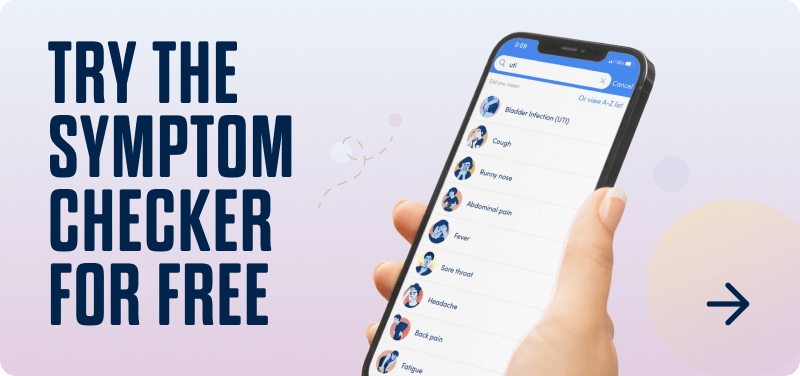Almotriptan (Axert) is a type of prescription medication called a selective serotonin receptor agonist, simply known as triptans.
The medication’s active ingredient is almotriptan malate.
It affects serotonin and narrows certain blood vessels in the brain.
This prevents pain signals from being sent and stops the release of substances in the body that can trigger nausea. You can only purchase almotriptan when a doctor prescribes it for you.
Almotriptan is used to treat acute migraines with or without aura in adults and adolescents aged 12 and older who have an attack that lasts up to four hours (if untreated).
Auras are warning signs such as blind spots and flashes of light that set in before the migraine pain. These auras usually last one hour or less.
Almotriptan is not a prophylactic migraine treatment, so you should only use it to reduce migraine symptoms, not as a preventive measure.
Almotriptan can only be used with a doctor’s diagnosis (not a self-diagnosis).
It cannot be used to treat hemiplegic or basilar migraines, or cluster headaches. It is not proven to be safe for children under 12 years old.
In this article, I’ll discuss almotriptan dosage and how fast it works.
I’ll explain the possible side effects and potential interactions with other drugs. I’ll talk about some precautions to take before using almotriptan.
Finally, I’ll explore alternative medications.
Almotriptan Dosage
Almotriptan is available in tablet form with two dosage strengths: 6.25 mg and 12.5 mg.
The recommended dose of almotriptan for both adolescents aged 12 and above and adults is 6.25-12.5 mg.
For adults, 12.5 mg is usually more effective.
Reactions can vary, however, so almotriptan is prescribed on an individual basis.
How to use almotriptan
Use the medicine exactly as your doctor prescribed it.
If you do not experience relief after using almotriptan for a migraine, you may repeat the dose after two hours.
Do not use more than 25 mg daily.
If a doctor prescribes almotriptan for people with hepatic or renal impairment, the starting dose is usually 6.25 mg, and the maximum daily dose is 12.5 mg.
You can take almotriptan with a meal, since food does not affect how the body absorbs it.
How Fast Does Almotriptan Work?
Almotriptan relieves symptoms of migraine within two hours of ingestion.
Almotriptan Side Effects
Some of the common side effects of taking almotriptan include:
More severe adverse reactions include:
- Acute myocardial infarction (heart attack)
- Sensation of tightness, pain, or pressure in the chest, throat, neck, and jaw
- Peripheral vascular ischemia
- Increase in blood pressure
- Serotonin syndrome
This is not an exhaustive list of the possible side effects.
If you notice any of these symptoms, speak with your doctor.
What happens when you overdose
Overdosing may cause hypertension or other more serious cardiovascular symptoms.
There is no specific antidote for an almotriptan overdose.
In severe cases of overdose, intensive care procedures may be performed, which include:
- Establishing and maintaining a patient airway
- Ensuring adequate oxygenation
- Monitoring of cardiovascular system and support if necessary
Even after the doctor or healthcare provider can no longer observe clinical symptoms, observation and echocardiographic monitoring will continue for about 20 hours.
What happens when you miss a dose
Almotriptan is used based on your need, so there is no specific dosing schedule. Instead, talk to your doctor to know the maximum number of tablets you can use each day. There are no negative effects from skipping a dose.
Drug Interactions with Almotriptan
Drug interactions occur when ingesting two medicines simultaneously will change their effect on the body.
Specific combinations can be unsafe, and even fatal.
Certain medications interact with almotriptan and should be avoided during use.
What to avoid when taking almotriptan
Some of the drugs that interact with almotriptan include:
- Ergot-containing drugs: Medicines such as dihydroergotamine, methysergide and ergotamine tartrate should not be used within 24 hours of taking almotriptan. Combined use can cause prolonged vasospasm, which narrows the arteries and decreases blood flow.
- Other triptans: Other triptans should not be used within 24 hours of using almotriptan. Examples include sumatriptan, eletriptan, rizatriptan, frovatriptan, and zolmitriptan.
- Ketoconazole and other potent CYP3A4 inhibitors: Ketoconazole is used for treating fungal infections. Use of almotriptan and oral ketoconazole or other CYP3A4 inhibitors at the same time is not recommended because it leads to an increase in the amount of almotriptan available in the bloodstream. If it cannot be avoided, the starting dose for treatment will be 6.25 mg of almotriptan, while the maximum daily dose will be 12.5 mg. However, it should be completely avoided for hepatic or renal impairment patients.
- Selective serotonin reuptake inhibitors (SSRIs)/serotonin norepinephrine reuptake inhibitors (SNRIs): Combined use of SSRIs or SNRIs with almotriptan can lead to serotonin syndrome, a life-threatening condition.
Tell your doctor about all medicines you take, including prescriptions, nonprescription drugs, vitamins, and any kind of supplements or herbal products.
If you’re unsure what class of drug your medications belong to, check with your doctor or healthcare provider.
Precautions Before Taking Almotriptan
Before taking almotriptan:
- If you’re allergic to almotriptan, any of its ingredients, or any medicine in general, speak to your doctor. Symptoms of an allergic reaction include an itchy rash, difficulty swallowing or breathing, and a swollen face, lip, mouth, tongue, or throat.
- Tell your doctor if you have taken any of the drugs almotriptan interacts with within 24 hours.
- Tell your doctor about any other medicines you’re using, including prescription and non-prescription medicines, vitamins, and herbal supplements.
- Keep a headache diary, and avoid taking almotriptan for more than 10 days a month to prevent medication-overuse headache.
- Tell your doctor if you’re pregnant or plan to get pregnant, as it is unknown whether almotriptan is safe for unborn babies.
- Tell your doctor if you are breastfeeding or plan to breastfeed. Many drugs pass through breastmilk, but it is unknown whether almotriptan does.
- Tell your doctor if you have had a stroke, symptoms of a stroke or transient ischemic attack (TIA), heart problem, high blood pressure, or blood vessel problem. Almotriptan may not be suitable for you.
- Talk with your doctor if you have hemiplegic or basilar migraines. Almotriptan does not treat these types of migraine.
- Do not plan to drive or operate machinery when using almotriptan because it can cause drowsiness.
Risk factors
Almotriptan can have serious side effects, including heart attack and other heart problems.
It is not recommended for people who have heart disease or risk factors of heart disease.
Some risk factors for heart disease include:
- High blood pressure
- Smoking
- High cholesterol level
- Diabetes
- Overweight
- Family history of heart disease
- Being postmenopausal
- Being a person with a penis over 40 years old
- Family history of stroke
If individuals with these risk factors have to use almotriptan, they need to have a heart exam first.
Almotriptan Alternatives
You may be unable to use almotriptan because of underlying health conditions, certain risk factors, or severe side effects.
Your doctor can offer you an alternative medicine that will help with migraine symptoms.
These include:
- Nonsteroidal anti-inflammatory drugs (NSAIDs): Medications such as ibuprofen and naproxen sodium can effectively treat mild to moderate migraine symptoms.
- Other triptans: There are other triptans besides almotriptan. They act similarly but have varying efficacy and tolerability profiles. One of these triptans may be better for you.
- Ditans: Ditans are also used for the treatment of acute migraines, and are a suitable alternative for those who cannot take triptans. Ditans bind to a different receptor subtype, leading to fewer side effects related to vasoconstriction. This makes it preferable for patients with conditions such as ischemic heart disease and Raynaud’s phenomenon.
- Gepants: First and second-generation calcitonin gene-related peptide (CGRP) receptor antagonists, also known as gepants, are used to treat acute migraine. They do not narrow blood vessels and can be used by people with heart disease.
- Ergotamine: Ergotamine is used to treat migraines and cluster headaches. It is primarily used for throbbing headaches and not general pain.
- Cefaly: Cefaly is a device approved for the treatment and prevention of migraines, with or without aura. It’s only suitable for persons 18 years of age and above. It sticks to the forehead and then sends electrical impulses to reduce migraine symptoms.
These drugs or devices will be recommended to you based on your individual needs.
Not all are suitable for everyone. Discuss your options with your doctor.
When to See a Medical Provider
If you experience a headache and think it might be a migraine, visit your doctor for a proper diagnosis.
If your doctor confirms it is a migraine headache, they may then run some tests to confirm it is safe for you to use almotriptan before prescribing it.
This is because some medical conditions put you at high risk of experiencing certain adverse events.
If you start using almotriptan and experience side effects, seek medical advice on whether to discontinue use or how to manage the adverse effects better.
How K Health Can Help
Are you dealing with migraines? It may be time to talk to a doctor.
Did you know you can get affordable primary care with the K Health app? Download K Health to check your symptoms, explore conditions and treatments, and, if needed, text with a clinician in minutes. K Health’s AI-powered app is based on 20 years of clinical data.
Frequently Asked Questions
K Health has strict sourcing guidelines and relies on peer-reviewed studies, academic research institutions, and medical associations. We avoid using tertiary references.
-
Almotriptan: A Review of Its Use in Migraine. (2002).
https://pubmed.ncbi.nlm.nih.gov/11817980/ -
Almotriptan in the Treatment of Migraine. (2007).
https://www.ncbi.nlm.nih.gov/pmc/articles/PMC2656322/#:~:text=Almotriptan%2C%20was%20found%20to%20be,rate%20of%20all%20the%20triptans -
Gepants for the Treatment of Migraine. (2019).
https://pubmed.ncbi.nlm.nih.gov/31081399/ -
Highlights of Full Prescribing Information. (2017).
https://www.accessdata.fda.gov/drugsatfda_docs/label/2017/021001s015lbl.pdf -
Treating Migraines: More Ways To Fight the Pain. (2017).
https://www.fda.gov/consumers/consumer-updates/treating-migraines-more-ways-fight-pain

 Medically reviewed
Medically reviewed

